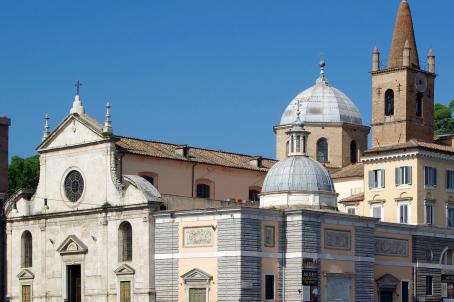Basilica di Santa Maria in Montesanto

The Basilica of Santa Maria di Montesanto is, together with its twin church, Santa Maria dei Miracoli, the base of the so-called "trident", three streets leading from Piazza del Popolo: from the left, Via del Babuino, Via del Corso and Via di Ripetta. The origin of the churches dates back to the 17th century in what was the main entrance to Rome in the Middle Ages and the Renaissance, via Via Flaminia. Pope Alexander VII commissioned the architect Carlo Rainaldi to design the monumental entrance to the Via del Corso. The project included two churches, but the different configurations of the two available locations meant that major changes had to be made to the plans.





